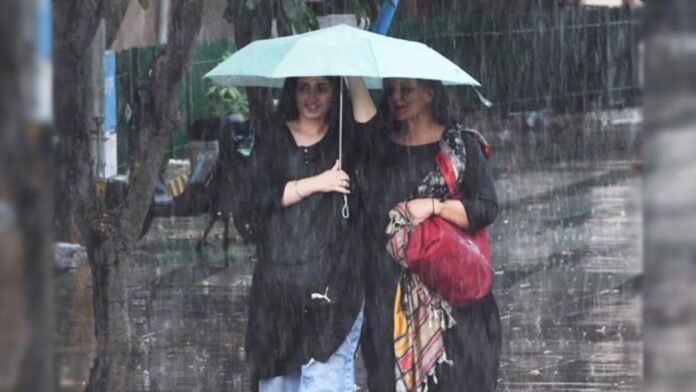A new spell of monsoon rains has started across Pakistan, resulting in severe weather conditions in multiple areas. Due to continuous heavy rains in the lowlands, urban and rural areas suffered immensely from massive flooding. This flood-like situation has damaged houses, agriculture, and infrastructure in Punjab, Sindh, Balochistan, and Gilgit-Baltist.
Flood Situation in Punjab Monsoon Rains
Being Pakistan’s most populous province, Punjab is severely affected by ongoing monsoon rains.
Impact on Major CitiesMonsoon Rains
Narowal, Shakargarh, and Jhelum have received torrential rainfall, causing floods at many places near their rivers, which flow through low-lying areas, transforming streets into canals, making it difficult for residents to cope with this sudden change.
Shakargarh is under massive threat as Bein Nullah is experiencing high-level floods, which may enter surrounding settlements if the water level keeps rising continuously.
Rescue Operations Monsoon Rains
Authorities immediately took action when nine farmers and their shepherds got stuck in the flood waters of Bein Nullah. Rescuers later successfully evacuated them. The locals admire this quick response but are still worried because the water level periodically increases.
Road Closures and Traffic Disruptions Monsoon Rains
Some blocked roads hamper rescue efforts by preventing access to specific affected locations, compounding an already complex situation.
Damage in Gilgit-Baltistan Monsoon Rains
In Gilgit-Baltistan, several areas have been cut off from main cities due to flooding caused by rivers or streams overflowing their banks. This damage to road infrastructure, such as bridges, makes the roads impassable for any vehicle that wants to reach villages where people reside permanently or temporarily.
District Astore has suffered the most, with heavy rains destructing property and infrastructure in dozens of locations.
Affected Districts Monsoon Rains
Kohlu, Harnai, Sibi, Bolan, Jhal Magsi, and Naseerabad have experienced heavy rainfall, which caused flash floods to submerge many low-lying areas along their rivers. This destroyed houses, agricultural lands, and other structures, forcing inhabitants to flee to higher ground for safety.
Emergency Response Monsoon Rains
Although local authorities are making relief efforts, widespread damage makes accessing all affected places at once difficult.PDMA is trying its best to relocate those living in hazardous zones to provide amenities like food, water, shelter, etc. until the situation returns to Sindh Struggles with Severe Flooding
Monsoon rains have disrupted life in many districts of Sindh province. Heavy showers pounded these areas, resulting in massive floods.
Impacted Areas Monsoon Rains
Larkana, Dadu, Nawabshah, and Khairpur are among the districts where it rained heavily, submerging all nearby low-laying regions under water. This catastrophe caused severe damage to human settlements (houses), infrastructure (roads and bridges), and crop destruction.
Flooding has severely affected rural areas, wiping out the primary source of income for the majority who depend on agriculture. As a result, they face starvation unless immediate interventions are made.
Problems in Giving Aid
The regional government has used all its means to supply assistance to the stricken areas. However, authorities on-site cannot handle the magnitude of this devastation. Furthermore, many roads have become impassable due to increasing water volumes, making it difficult for help to reach those who need it.
Preventive Measures
He says, “We should be watching what is happening around us, but at the same time, we must have all necessary facilities for any eventuality. He emphasized that there should be coordination among federal and provincial agencies to avert these floods from causing much harm and ensure the safety of lives and property of those affected.”


